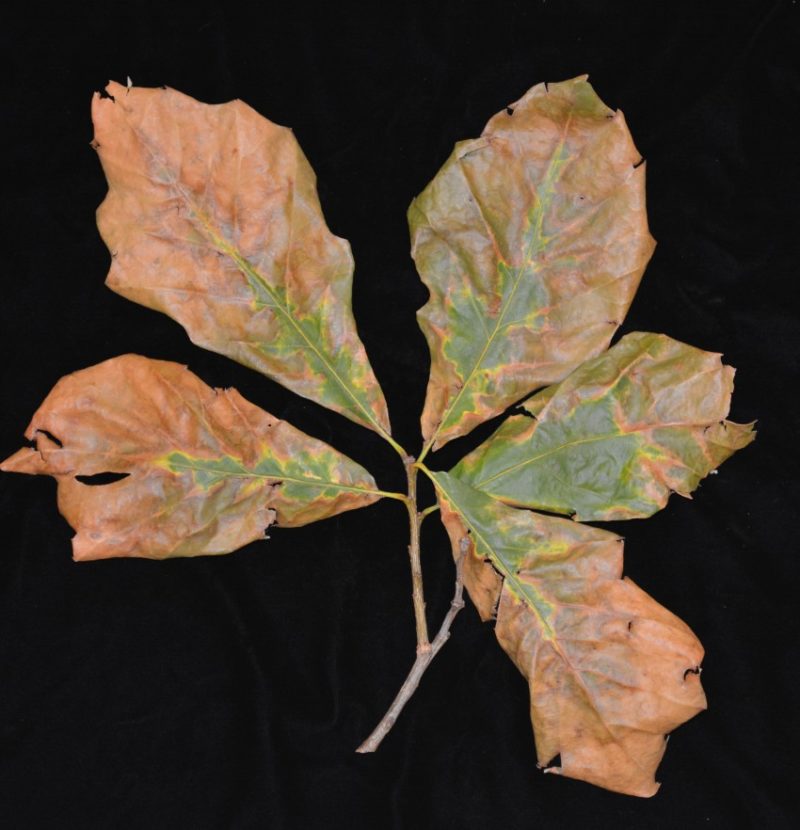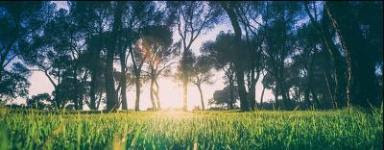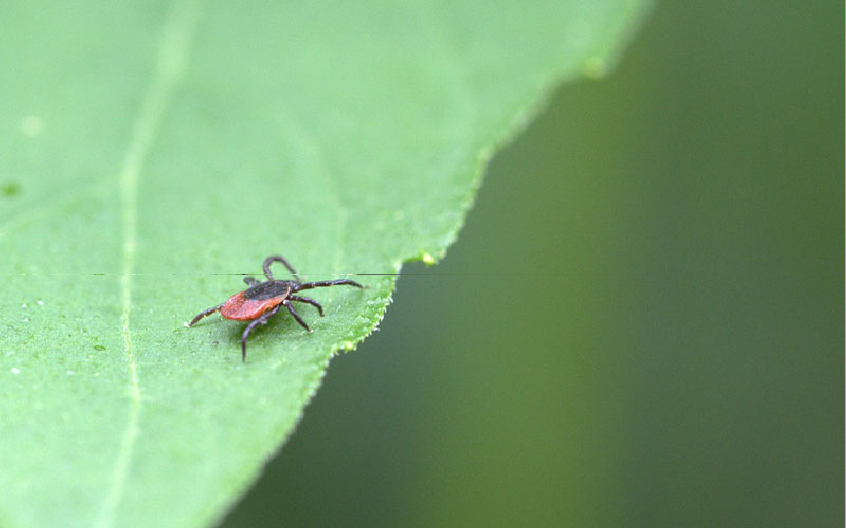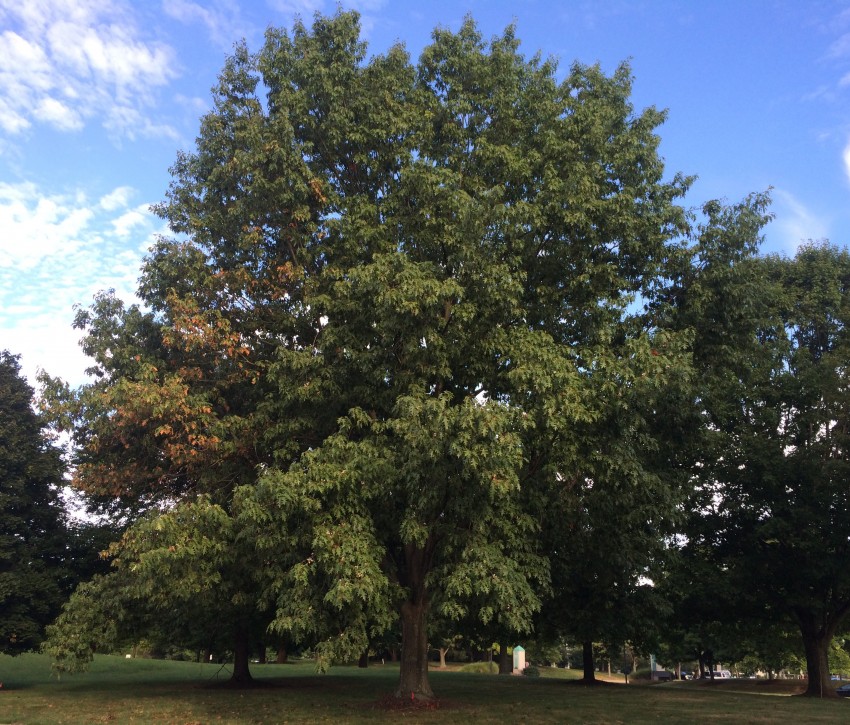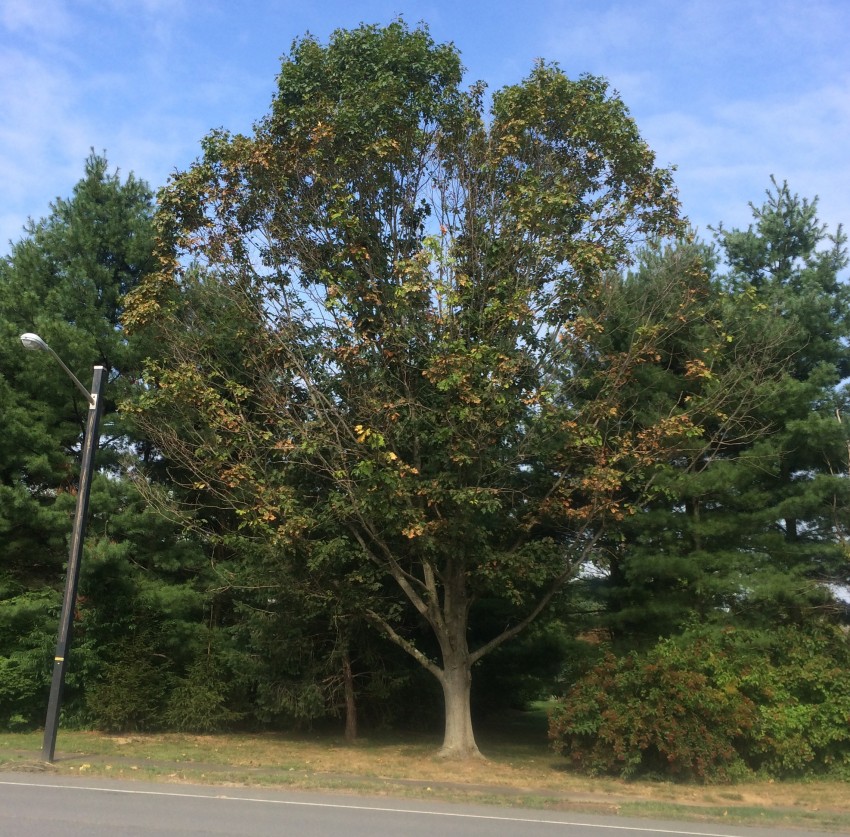The last couple of weeks in the Plant Diagnostic Laboratory brought a flurry of phone calls regarding bacterial leaf scorch. Folks are concerned about the disease and several samples have been submitted from locations in New Jersey and the New York metropolitan area.

branches with scorched leaves. Photo: Richard Buckley,
Rutgers PDL
If you hadn’t noticed, over the last several weeks symptoms of the disease have been showing up in the urban forest. The leaves of infected trees suddenly scorch in a manner similar to drought. Bacterial leaf scorch is unique in that the scorching is irregular on individual leaves and in the tree canopy. We had adequate moisture in New Jersey for the first half of the year, so we have not seen much evidence of drought stress in mature trees (until now). Infected trees that are expressing symptoms stand out rather dramatically from the others.
We tested several oaks – mostly red oaks – an elm, a maple, a couple dogwood samples and a sweetgum over the last two weeks. The oaks, including the swamp white oak pictured above, mostly tested positive. The other trees tested negative, but all of them are on the host list for the disease. Despite a mostly moderate summer, some locations in New Jersey have been quite dry since early-August, so we are just starting to see leaf scorching and drought stress symptoms on some plants from certain parts of the state. These symptoms can be very similar to those caused by bacterial leaf scorch, so concern about infection and the subsequent tests were prudent. It is always better to be safe than sorry. Remember, bacterial leaf scorch causes scorching that is random on individual leaves and in the canopy. Drought stress is quite uniform on the leaves and usually covers all the leaves in the canopy.

dogwood. The scorch symptoms are on every leaf in the
entire canopy. Photo: Richard Buckley, Rutgers PDL
Bacterial leaf scorch in oaks is a chronic disease. From year to year the scorching covers more of the canopy and the infected tree looks scrubbier and scrubbier. Ultimately, the aesthetic beauty of the tree declines to the point where it needs to be removed, or the tree becomes a hazard and must be removed.

scorch. This tree has been infected for several years and
is getting closer to failure. Photo: Richard Buckley,
Rutgers PDL
There is a whole lot we don’t know about bacterial leaf scorch in amenity shade trees. Information regarding prevention and control is fleeting or non-existent. The thing we can tell you, however, is whether or not your tree carries the pathogen. The testing protocol requires plant material with symptoms, so the window has been open since symptoms started showing up in mid-August. Once we see fall color and the leaves start to drop, we are done for the season. It’s not too late… ’tis the season to test.

